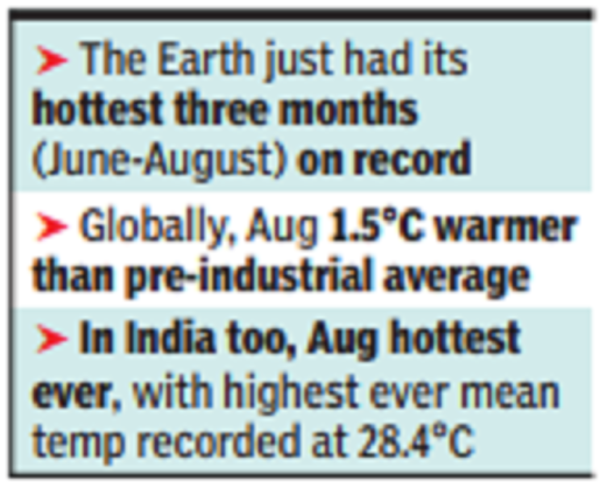Underlining how the earth just had its hottest three months (June-August) on record, the data shows August as a whole was globally estimated to have been around 1.5°C warmer than the pre-industrial average for 1850-1900.
The data also indicates the possibility of the year 2023 breaching the 1.5 degrees celsius temperature threshold in sync with the WMO’s prediction in May that the annual average global temperature between 2023 and 2027 will be more than 1.5 degree celsius above pre-industrial levels for at least one year.
Though the WMO did not say that the world will permanently exceed the threshold, specified in the Paris Agreement which refers to long-term warming over many years, the C3S data for August, NASA data for July and different analysis for other summer months could be a warning sign for turning 2023 the hottest year.
“The northern hemisphere just had a summer of extremes – with repeated heatwaves fuelling devastating wildfires, harming health, disrupting daily lives and wreaking a lasting toll on the environment. In the southern hemisphere Antarctic sea ice extent was literally off the charts, and the global sea surface temperature was once again at a new record. It is worth noting that this is happening before we see the full warming impact of the El Niño event, which typically plays out in the second year after it develops,” said WMO secretary-general Petteri Taalas.
In India, August was the hottest ever (since 1901 when scientific record keeping started) in India. The IMD’s records show that the country recorded the highest ever mean temperature in August with 28.4 degree celsius which was 0.84 degree C higher than normal mean temperature.
August as a whole saw the “highest global monthly average sea surface temperatures” on record across all months, at 20.98 degrees celsius. In fact, the temperatures exceeded the previous record (March 2016) every single day in August. “Global sea surface temperatures are at unprecedented highs for the third consecutive month and Antarctic Sea ice extent remains at a record low for the time of year,” said the WMO.
In yet another report on Wednesday, the WMO attributed increasing intensity and frequency of heatwaves to climate change saying this extreme heat, compounded by wildfires and desert dust, is having a measurable impact on air quality, human health and the environment.
It draws attention to the fact that it is not just high temperatures which are a hazard, but also the impact of resulting pollution which are often overlooked but are just as pernicious.
